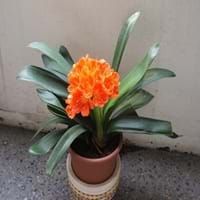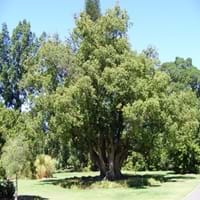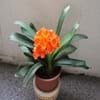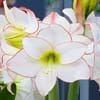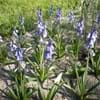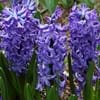Life Span
Perennial
Perennial
Type
Bulb or Corm or Tuber
Tree
Origin
South Africa
India, China
Types
Not Available
Bead tree
Habitat
Temperate Regions, Woodlands
Forest margins, Roadsides
USDA Hardiness Zone
9-11
8-15
Sunset Zone
21,22
H1, H2, 6, 7, 8, 9, 10, 11, 12, 13, 14, 15, 16, 17, 18, 19, 20, 21, 22, 23, 24
Habit
Clump-Forming
Oval or Rounded
Flower Color
Yellow, Red, Orange
Lavender
Flower Color Modifier
Bicolor
Bicolor
Leaf Color in Spring
Dark Green
Green, Dark Green
Leaf Color in Summer
Light Green
Dark Green
Leaf Color in Fall
Several shades of Green
Dark Green
Leaf Color in Winter
Light Green
Dark Green
Leaf Shape
Long Linear
Pinnate
Plant Season
Spring, Winter
Spring, Summer, Fall, Winter
Sunlight
Partial shade, Full Shade
Full Sun, Partial Sun, Partial shade
Type of Soil
Loam, Sand
Clay, Loam, Sand
The pH of Soil
Acidic, Neutral
Acidic, Neutral, Alkaline
Soil Drainage
Well drained
Average
Bloom Time
Early Spring, Spring, Late Spring, Winter, Late Winter
Early Spring, Spring, Late Spring
Tolerances
Drought
Cold climate, Drought, Pollution, Soil Compaction, Variety of soil types
Where to Plant?
Container, Ground
Ground
How to Plant?
Seedlings, Transplanting
Rooted stem cutting, Seedlings, Stem Planting
Plant Maintenance
Medium
Low
Watering Requirements
Water more in summer
Average Water Needs, Medium, Requires regular watering, Requires watering in the growing season, Water daily during growing season, Water less during winter
In Summer
Lots of watering
Ample Water
In Spring
Moderate
Less Watering
In Winter
Average Water
Less Watering
Soil pH
Acidic, Neutral
Acidic, Neutral, Alkaline
Soil Type
Loam, Sand
Clay, Loam, Sand
Soil Drainage Capacity
Well drained
Average
Sun Exposure
Partial shade, Full Shade
Full Sun, Partial Sun, Partial shade
Pruning
Remove damaged leaves, Remove dead branches, Remove dead leaves
Prune if you want to improve plant shape, Remove damaged leaves, Remove dead leaves, Remove dead or diseased plant parts, Remove deadheads
Fertilizers
fertilize in growing season
Fertilize every year, fertilize in growing season, Less fertilizing
Pests and Diseases
Red blotch
Insects, Red blotch
Plant Tolerance
Drought
Cold climate, Drought, Variety of soil types
Flower Petal Number
Single
Single
Foliage Texture
Coarse
Coarse
Foliage Sheen
Glossy
Glossy
Attracts
Insects
Birds, Butterflies
Allergy
Asthma, breathing problems, Itchiness
Toxic
Aesthetic Uses
Beautification, Landscape Designing, Showy Purposes, Used for decorating walls, fences, gates, hedges, etc.
Beautification, Landscape Designing, Showy Purposes
Beauty Benefits
Not Available
Not Available
Environmental Uses
Air purification, Food for insects, Prevent Soil Erosion
Absorbs greenhouse gases, Absorbs huge amounts of CO2, Air purification, Amazing growth rate, Erosion control, Food for birds, Food for insects, Forms dense stands, Nesting sites for birds, No fertilizer, pesticides, or herbicides needed, Prevent Soil Erosion, Shadow Tree, Shelter for wildlife, Soil protection, soil stabilisation, Used to establish native woodland, Very little waste, Wildlife, Windbreak
Medicinal Uses
Not Available
Not Available
Part of Plant Used
Flowers
Seeds, Stem, Tree trunks
Other Uses
Decoration Purposes, Showy Purposes, Used as Ornamental plant
Air freshner, Showy Purposes, Used as firewood, Used as Ornamental plant, Wood is used for making furniture, Wood is used for ship building, Wood is used fore making tools, Wood is used in construction, Wood log is used in making fences
Used As Indoor Plant
Yes
No
Used As Outdoor Plant
Yes
Yes
Garden Design
Container, Feature Plant, Foundation, Houseplant, Mixed Border
Shade Trees
Botanical Name
CLIVIA miniata
MELIA azedarach
Common Name
Clivia
Chinaberry Tree
In Hindi
Clivia
Chinaberry ट्री
In German
Clivia
Chinaberry -Baum
In French
Clivia
Chinaberry Arbre
In Spanish
Clivia
Chinaberry Arbre
In Greek
κλίβια
chinaberry Δέντρο
In Portuguese
Clivia
azederaque
In Polish
Clivia
azederaque
In Latin
Clivia
Chinaberry ligno
Phylum
Magnoliophyta
Magnoliophyta
Class
Liliopsida
Magnoliopsida
Order
Asparagales
Sapindales
Family
Liliaceae
Meliaceae
Clade
Angiosperms, Monocots
Angiosperms, Eudicots, Rosids
Tribe
Not Available
Melieae
Subfamily
Amaryllidoideae
Meloideae
Number of Species
Not Available
Not Available
Importance of Clivia and Chinaberry Tree
Want to have the most appropriate plant for your garden? You might want to know the importance of Clivia and Chinaberry Tree. Basically, these two plants vary in many aspects. Compare Clivia and Chinaberry Tree as they differ in many characteristics such as their life, care, benefits, facts, etc. Every gardener must at least have the slightest clue about the plants he wants to plant in his garden. Compare their benefits, which differ in many ways like facts and uses. The medicinal use of Clivia is Not Available whereas of Chinaberry Tree is Not Available. Clivia has beauty benefits as follows: Not Available while Chinaberry Tree has beauty benefits as follows: Not Available.
Compare Facts of Clivia vs Chinaberry Tree
How to choose the best garden plant for your garden depending upon its facts? Here garden plant comparison will help you to solve this query. Compare the facts of Clivia vs Chinaberry Tree and know which one to choose. As garden plants have benefits and other uses, allergy is also a major drawback of plants for some people. Allergic reactions of Clivia are Asthma, breathing problems and Itchiness whereas of Chinaberry Tree have Toxic respectively. Having a fruit bearing plant in your garden can be a plus point of your garden. Clivia has no showy fruits and Chinaberry Tree has showy fruits. Also Clivia is not flowering and Chinaberry Tree is not flowering . You can compare Clivia and Chinaberry Tree facts and facts of other plants too.
